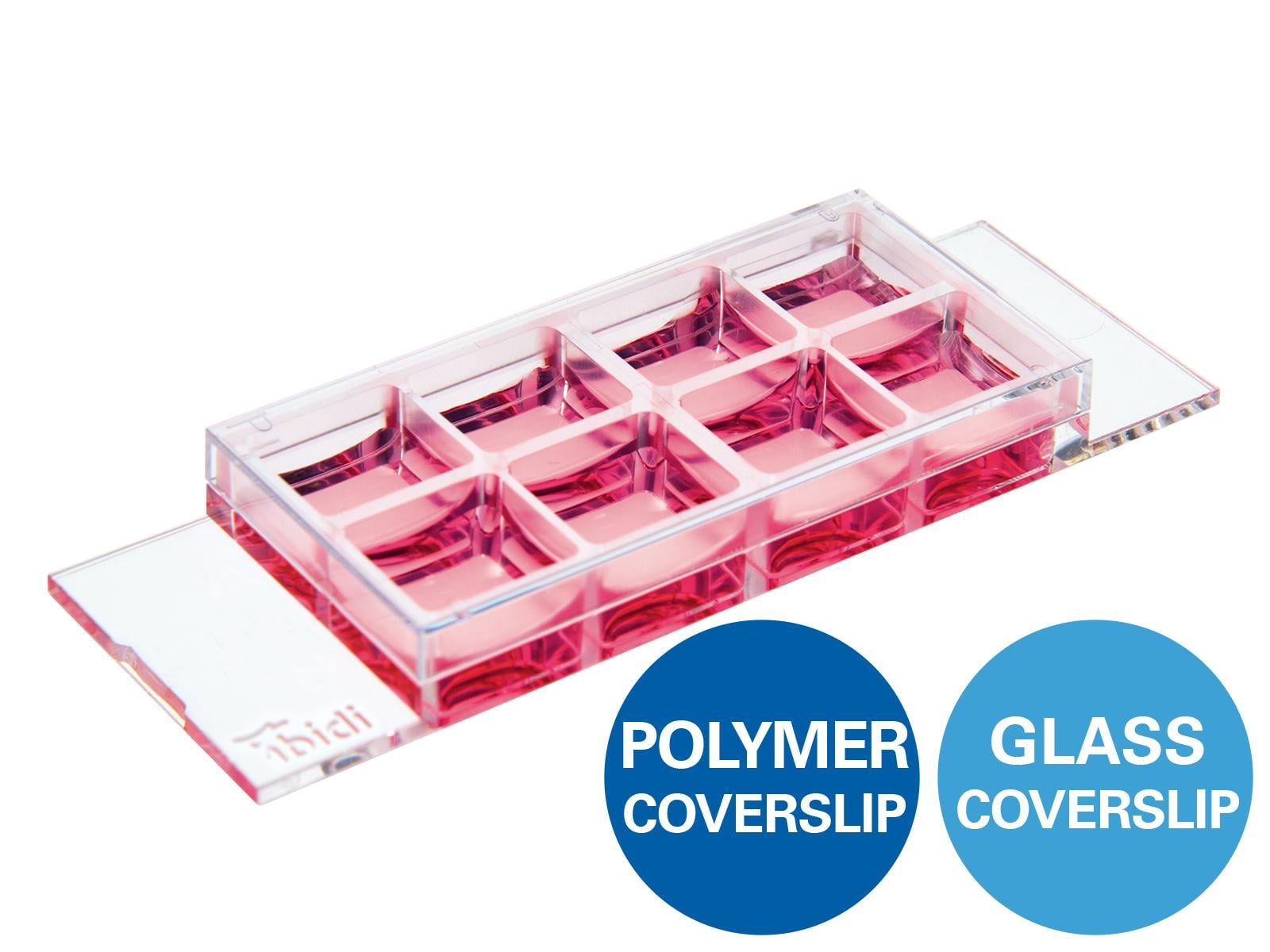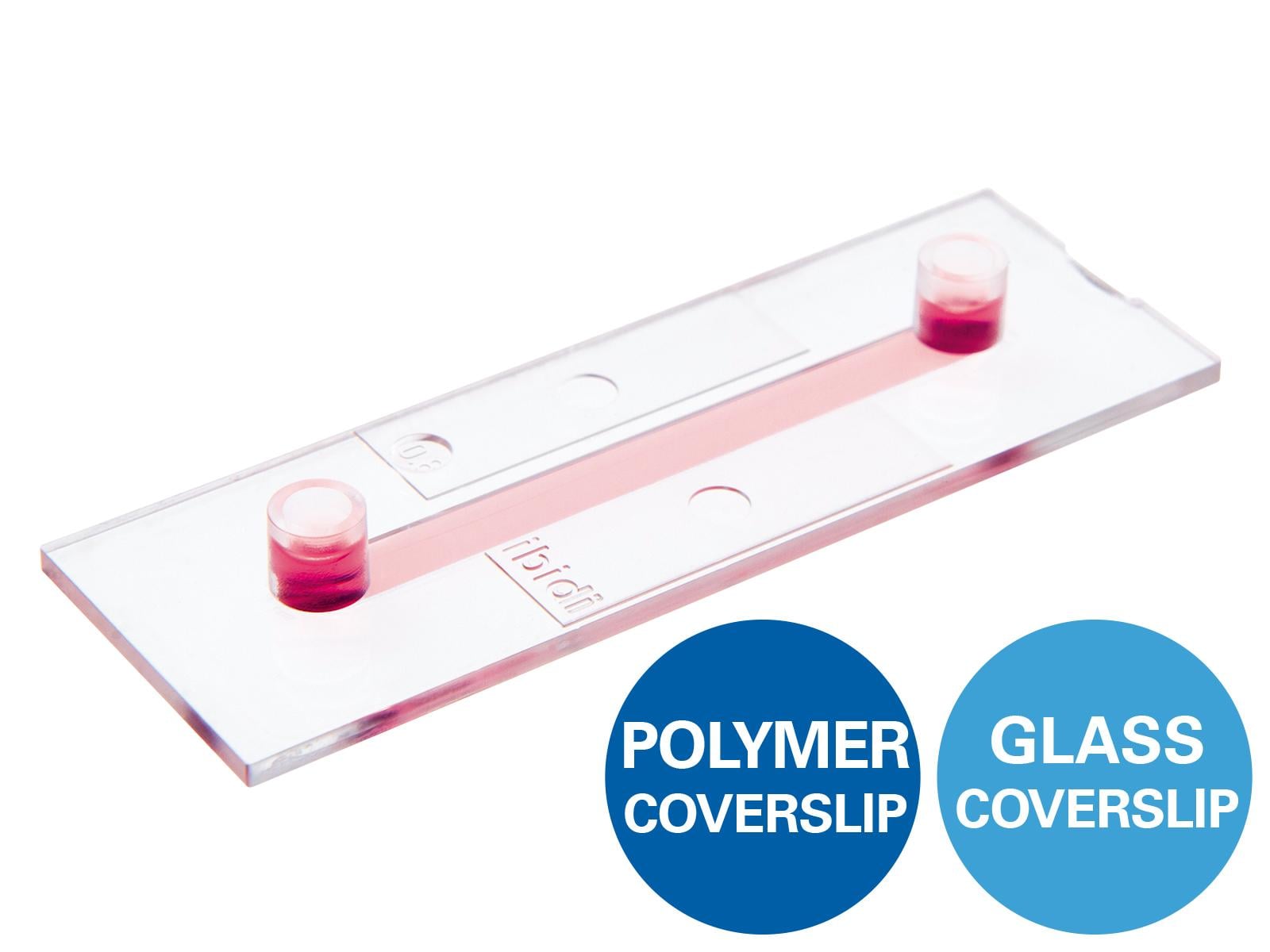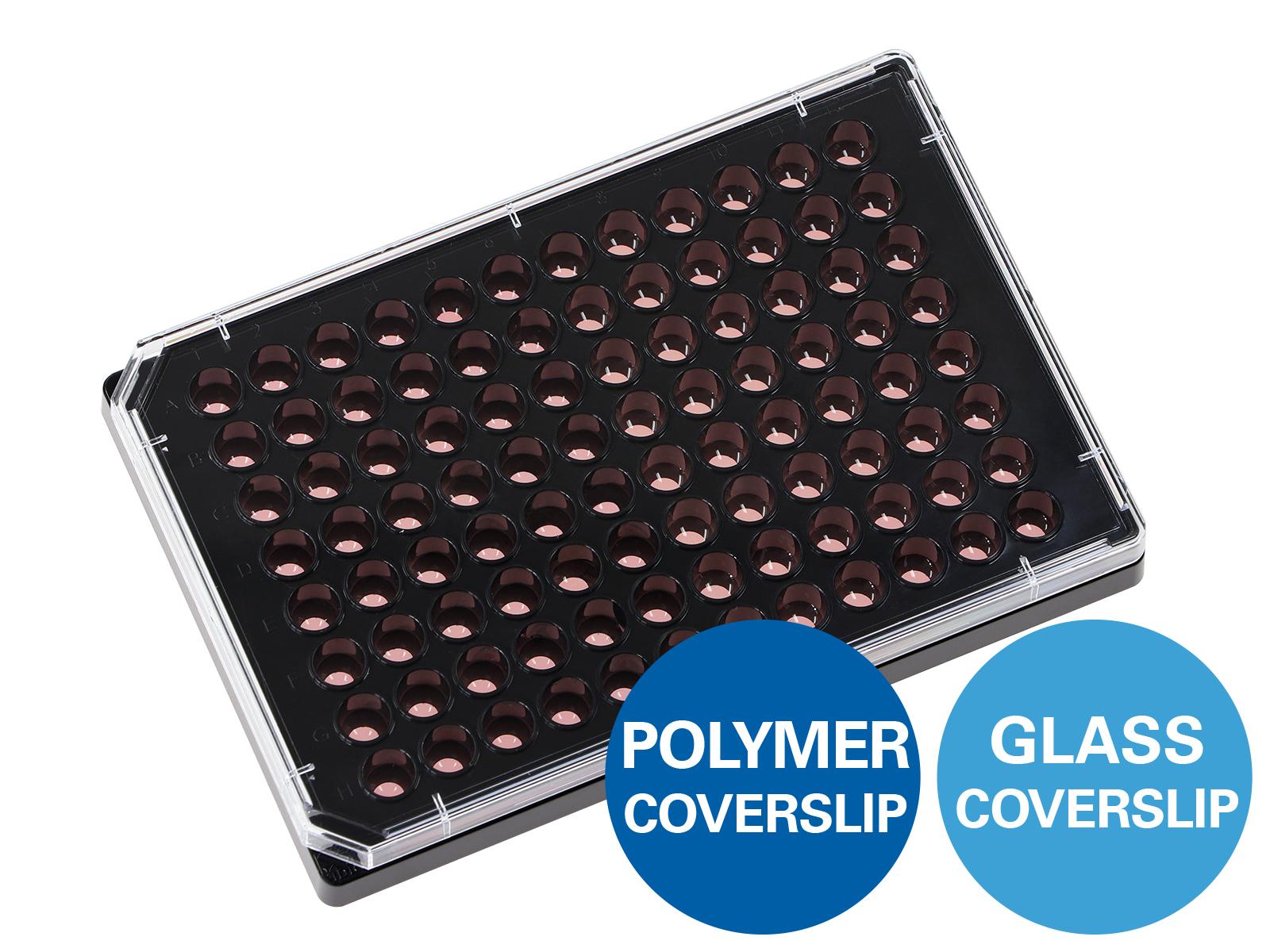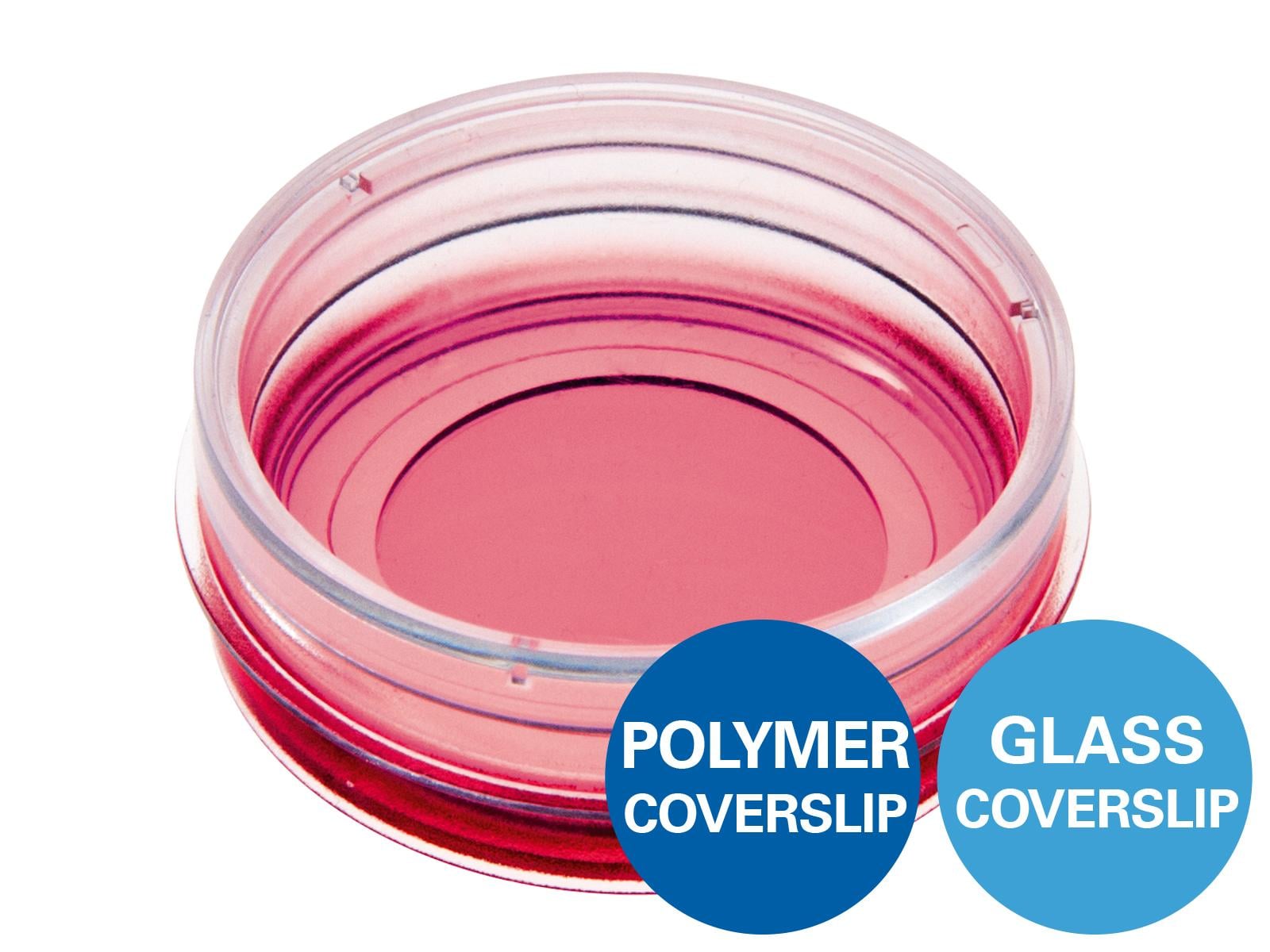TT1: DynaVasc – Self-Formed Vascular Networks on a Perfused Microfluidic Chip
DynaVasc is a 3D bioprinting-compatible microfluidic chip for the dynamic cultivation of vascularized tissue models, developed for the self-formation and cultivation of vascular vessels from endothelial cells.
This project demonstrates ibidi’s expertise in vascular biology, microfluidics, and flow-based assay development.
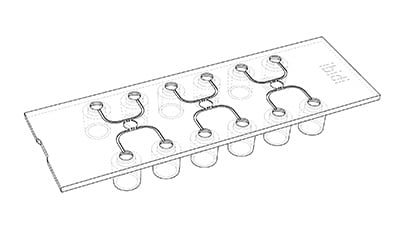
Why It Matters
For the first time, DynaVasc makes it possible to observe how vascular networks grow, remodel, and respond to mechanical forces under precisely controlled flow conditions.
This represents a fundamental step toward reproducing complex vascular processes outside the human body.
By enabling realistic and dynamic in vitro models, DynaVasc opens new possibilities for studying and combating diseases such as atherosclerosis, thrombosis, stroke, and cancer.
DynaVasc helps researchers to:
- Analyze vessel growth and remodeling under physiological shear stress
- Investigate endothelial barrier function and permeability
- Test vascular-targeted and anti-angiogenic therapies under dynamic flow
- Replace or reduce animal testing through human-based model systems
Ultimately, DynaVasc provides an essential tool for understanding and treating vascular diseases, which are one of the major causes of mortality worldwide.
The Idea Behind the Technology: A New Approach to Vascular Modeling
The DynaVasc chip allows endothelial cells to grow and form vascular-like structures inside microchannels under defined flow. Shortly, endothelial cells are seeded into the chip in a biocompatible hydrogel and perfused peripherally to initiate angiogenesis, so that vascular vessels can form. These self-organized vascular structures can then be used in drug testing processes. They provide a viable alternative to animal models and allow the development of individualized medicine using patient-derived primary cells in the vascular model.
This chip greatly simplifies the connection of a perfusion system to self-organized vascular structures, and it enables the observation of angiogenesis under a microscope. Through this controlled environment, the system provides reproducible conditions for studying vessel growth, permeability, and the response to mechanical and chemical cues.
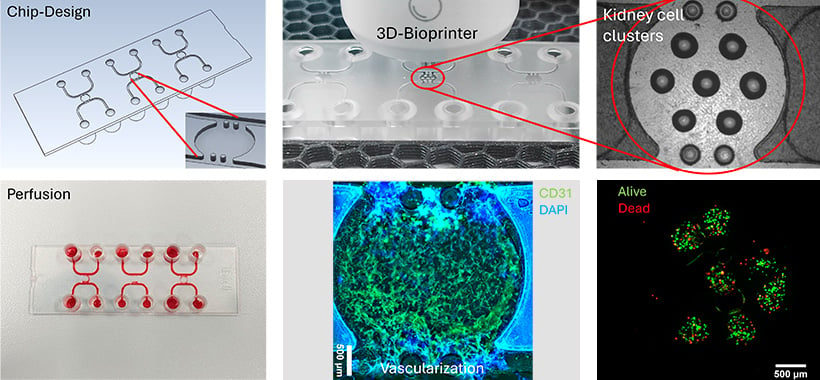
(A) A digital image of the chip design with magnification of the central chamber. The small pins in the magnified image allow the casting of a viscous hydrogel in the chamber without blocking the adjacent channels. (B) Printing small droplets inside the central chamber using a 3D bioprinter. (C) A microscope image of the printed droplets which consist of kidney cells inside an agarose hydrogel. (D) After sealing the chip with a coverslip foil, perfusion is possible through the channels. In the image, a red-colored liquid is filled into the channels to visualize the flow. (E) Fluorescence staining of self-assembled vascularization using primary endothelial cells. (F) Live-dead assay of the liver cell droplets after printing showing a high viability of the cells.
Status and Outlook
The DynaVasc project has been completed as a research collaboration with the Institute of Printing Science and Technology (IDD) at the Technical University of Darmstadt and has been published under https://doi.org/10.1002/adhm.202304028. The DynaVasc chip is currently at the prototype stage.
A patent application (EP 4289933 A1) has been filed for a cell culture vessel with specialized channel and reservoir, covering core concepts of the DynaVasc design.
A follow-up project has been launched to further develop the chip design and push the boundaries of angiogenesis-on-a-chip.
Synergies and Compatibility
The DynaVasc chip is compatible with the ibidi Pump System, providing a research platform for vascular biology, angiogenesis, and endothelial cell studies under defined shear stress.
Related ibidi Products
Key Facts
- Partners: Institute of Printing Science and Technology (IDD), TU Darmstadt
- Project lead: Philipp Linke (plinke@ibidi.de)
- Stage: Prototype
- Related patent applications or patent: EP 4289933 A1
- Publication: Fritschen A, Lindner N, Scholpp S, et al. High-Scale 3D-Bioprinting Platform for the Automated Production of Vascularized Organs-on-a-Chip. Adv Healthc Mater. 2024;13(17):e2304028. doi:10.1002/adhm.202304028.
- Focus Area: Vascular Biology, Angiogenesis, Microfluidics, Flow Assays, Organ-on-Chip

